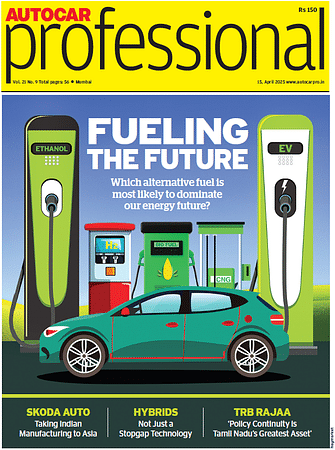Trump, Tesla And Tariffs
Can the auto components industry cope with lower tariffs and new competition in the Trump era?
The auto component industry can often be seen as an early indicator of the shifting winds of global trade, and the current disruptions in global trade patterns are already starting to rustle the leaves in this promising export sector. However, even as the threat of higher US tariffs looms, the Indian auto component industry appears positioned to weather the turbulence.
A recent Nomura report indicated that India accounted for just 3% of the $97 billion in auto components imported by the U.S. from outside North America in 2024. This figure pales in comparison to the dominant players in the American market, namely the European Union ($22 billion), China ($18 billion), Japan ($16 billion), and South Korea ($13 billion).
The Tariff Threat
One of India's key strengths lies in its cost efficiency, particularly in terms of labor. The average hourly wage in India's manufacturing sector stands at a mere $1.5, significantly lower than Mexico's $2.5 and a fraction of the US’s $15. This inherent cost advantage provides a degree of insulation against potential tariffs.
Vinnie Mehta, the Director General of the Automotive Component Manufacturers Association of India (ACMA), conveyed this sentiment at a recent industry event, describing the situation as "very very fluid" and acknowledging business concerns stemming from policy environment uncertainty.
"However, even if the worst comes and we were to literally make our duties zero, we see no threat because the US is a very high-cost producing nation.” ACMA, therefore, continues to maintain its projection of 20-30% annual export growth to the US, partly due to the headwinds China is likely to face. However, the trade landscape is rarely straightforward.
While the U.S. imposes a relatively low 2.5% tariff on Indian vehicles and auto parts, India maintains a considerably more protectionist stance, levying a 110% tariff (70% basic customs duty plus 40% cess) on fully assembled imported cars and a 15% tariff on auto parts. This disparity has been a long-standing point of contention in trade negotiations. The possibility of the U.S. imposing reciprocal tariffs, matching India's high duties, could pose a significant challenge to Indian exports.
The Tesla Factor
Tesla’s entry to the Indian market should also be seen in this context. While this has generated considerable buzz, its immediate impact on the domestic auto component landscape is projected to be limited. Industry sources suggest that Tesla's initial sales volumes might range between 5,000 and 10,000 units annually, a figure considered negligible within the broader ecosystem.
Even within the luxury segment, Tesla's anticipated market share is modest. Ashish Garg, Managing Director of Happy Forgings Ltd, noted that "The overall impact will depend on whether Tesla and other EV companies localise production in India, which could benefit the Indian components industry" The long-term success of Tesla in India, experts pointed out, will also depend on its ability to establish a robust service and charging infrastructure.
A Zero-Duty Tradeoff
Looking ahead, strategic trade negotiations between the U.S. and India will be crucial. One potential strategy involves India offering substantially lower tariffs for U.S.- made cars, provided they contain a high level of value addition within the U.S. (at least 90%). Another pragmatic approach could be a reciprocal zero-duty access agreement for auto components, mirroring existing Free Trade Agreements with countries like Japan and South Korea.
However, industry insiders claim that the unpredictability of President Trump's trade policies remains a significant variable. His administration's stance on tariffs is often transactional, aimed at securing the best possible deals for US businesses. Should the U.S. strike more favorable agreements with Mexico, Canada, or China, India’s relative position could change swiftly.
As one observer noted, "Competitiveness is very relative." Still, it would behoove India to maintain proactive measures to ensure continued access to lucrative export markets while fostering a resilient domestic manufacturing ecosystem.
RELATED ARTICLES
Infineon highlights future trends in e-bike user experience
At a recent webinar, Infineon outlined its offerings in power electronics, advanced sensor technologies, and microcontro...
Chasing 5%: Can Renault Reclaim Relevance in India’s Competitive Car Market?
Targeting full plant utilization and a 5% market share, Renault’s India reset hinges on fresh products, shared platforms...
Building It Different: How Ather Rewrote the Rules of the EV Game
Ather Energy, founded in 2013, focused on developing a fully integrated electric scooter platform, emphasizing in-house ...






 By Shahkar Abidi & Mayank Dhingra
By Shahkar Abidi & Mayank Dhingra
 06 Apr 2025
06 Apr 2025
 2087 Views
2087 Views









